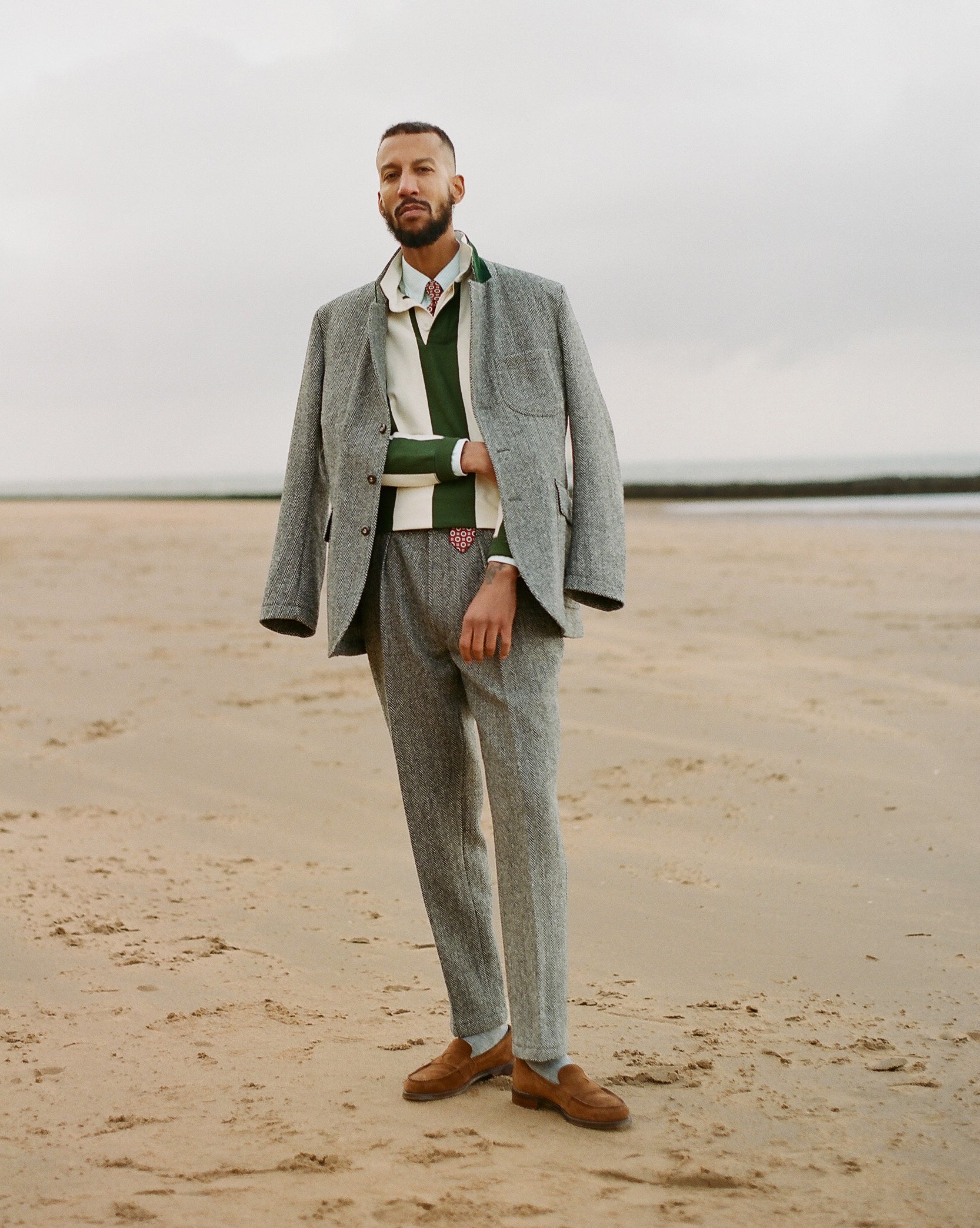G. Bruce Boyer On: The Rugby Shirt
By G. Bruce Boyer
Mar 29, 2023

I like the look of mixing casual clothes with tailoring, something I became particularly enamoured of in college. Some of the team athletes had an interesting way of mixing their active sports garments with a tailored jacket on and off campus. Rugby shirts were one of the items that seemed to morph from the playing field into almost basic garments in the campus wardrobe, often seen under tweed sports coats, or seersucker ones in spring. That’s the whole point of Take Ivy, long considered the definitive collection of classic Ivy League style photos by Japanese photographer Teruyoshi Hayashida.

The integration of sportswear into the American wardrobe is one of the more interesting aspects of the men’s dress in the past century or so. Before the 20th Century, authentic sports clothing was pretty much upper class gear. It took money and the time to be a sportsman and wear special clothes to hunt, go boating, play tennis or golf. Most people simply didn’t have the wherewithal or the leisure until the standard of living rose after the first World War. The best book on the subject is still the study by Robert Graves and Alan Hodge, The Long Weekend, a social history of the period between world wars in the UK, but explains pretty much what was happening generally to our wardrobes.

It’s not that people weren’t interested in sport, it’s simply that before the war, people who wanted to hike or fish, go boating, or play team games just wore their old clothes. Hiking and cycling, the two most popular sports in the first two or three decades of the century in the UK, easily accommodated any old outfit. But as people’s standard of living improved, and as they had more money and leisure, sports clothes – both for the audience and the participants – began to be seen in more wardrobes. Golf reached great popularity in Europe and the USA, and outfits for the course rapidly followed.

Chief among these new sports garments were the knitted cotton casual shirts worn by both university and professional athletes, the two most prominent being the polo shirt and the rugby. Both filtered through to fashion casualwear by mid-20th Century and have remained so ever since. The tennis version of the polo shirt was given the great boost when Rene Lacoste, longtime French tennis champion, designed a version that became such a classic Woody Allen even wrote a New Yorker piece about it.

The rugby is a slightly different matter. The particular form of football now called rugby is thought to have first been played at Rugby School around 1845, but the traditional outfit developed slowly. The standard shirt and shorts weren’t introduced until the 1880s. While there’s a certain variety in styles, the standard rugby shirt worn since the second-half of the 19th century is a knitted heavy cotton, long-sleeved pullover with either solid colored body or a pattern of broad stripes (garish color-combinations were designed, it’s been said, to frighten the opposition, but more usually these were club or school colors), and either a round, open neck or an attached woven cotton collar, and rubber buttoned front placket.
I have no idea who came up with the rubber-button idea, but it makes such perfect sense in a game as rugged as rugby is.

To jump ahead to the following century, there are collections of British drawings from the Wills Association Footballers cigarette card series from 1935 that show the various styles of shirts worn by star players. The popular model now had a matching or white collar. By mid-century, the rugby had begun to move from the playing field to campus sports shirt for general use. And so it has remained, worn with jeans and khakis for a casual weekday approach, and with a tweed sports coat or chore jacket at weekends.

But the traditional baggy cut of the rugby can make it feel a bit too bulky and cumbersome under a jacket. Why not slim it down? Which is exactly what Drake’s has done, solving this little conundrum with a bit of subtle refinement by trimming the body and sleeves to eliminate the excess. Not to mention adding mother-of-pearl buttons. It’s a very tasteful, more cultivated and urbane approach to a sports classic. My friend Michael Hill even suggests wearing one of these new classics with a suit. I’ve pondered this for several minutes in the shower, and think it accords very nicely with my philosophy.


